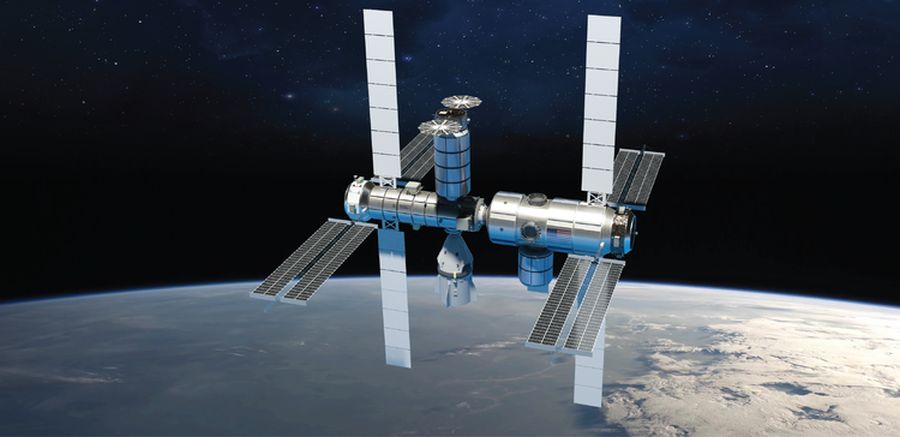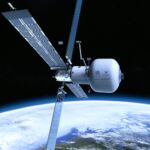NASA sets sail into a promising but perilous future of private space stations
NASA selects a mix of large and small US companies, and old and new players.


- Blue Origin, $130 million, leading a team including Sierra Space, Boeing, and Redwire Space
- Nanoracks, $160 million, leading a team including Lockheed Martin and Voyager Space
- Northrop Grumman, $125.6 million, leading a team including Dynetics

Each of these space station concepts is a "free flyer" in the sense of launching independently of any other facility. Previously, in February 2020, as part of a separate competitive procurement process, NASA awarded Axiom Space a $140 million contract to develop a habitable commercial module for the International Space Station. The award gives Axiom the right to attach its module to the station's Node 2 forward point.
At this stage, Axiom would appear to have some advantages in the competition for future NASA private station awards. In addition to providing the benefit of power, breathing air, and crew time through its initial attachment to the space station, Axiom is ahead in the design and construction of its facility. Axiom completed the cumbersome "preliminary design review" for its station in September, a process the free-flying stations are unlikely to finish before 2025.
But now, the "free flyer" competitors have some funding to try to catch up. . .
> Will Congress fund it?
The prevailing plan from Congress for some time has been to fly the International Space Station for as long as possible—the program has provided benefits across the country and is a reliable source of jobs at the major NASA field centers in Texas, Alabama, and Florida. . .So NASA has now "awarded" more than $550 million for private space stations, but Congress has yet to provide the funding for any of these grants. Asked what would happen if NASA does not receive the funding it needs for these stations, McAlister said the program would have to slow down. . .
> When will the ISS actually end?
The current agreement between NASA, Russia, and its international partners calls for the operation of the International Space Station through 2024. NASA's director for the International Space Station, Robyn Gatens, said Thursday that NASA has been working with US leaders to build support for an extension. . .The US government would then have to negotiate an extension with Russia and the other international partners to 2028 or 2030. There is general support for this, but recent Russian actions—such as shooting down its own satellite and putting debris into the orbital path of the space station—raise questions about the viability of the US-Russia partnership that has persisted so well for so long. . .Finally, there are concerns about the structure of the space station itself. It is aging, and there are small cracks starting to appear in the Russian module. Can the ISS safely fly for another seven to 10 years? Probably, but it's not a certainty.
> Can the private companies deliver?
The private companies who have won awards from NASA face a challenging road ahead. First, they must demonstrate technical competence to NASA as they design and build their facilities with an eye toward future funding. In a few years, NASA aims to provide a second, and more substantial, round of money to the providers it deems most credible. . .But NASA funding will only cover a fraction of the development costs. During Thursday's call, none of the awardees would answer a question about the total costs to design, build, and launch their space stations. . .Even as they're proving their technical chops to NASA, the private companies must work to raise private funding to complete their projects.
Asked about this during the Thursday news conference, Nanoracks chairman Jeff Manber pushed back. "I can't believe that a decade after commercial cargo was launched, folks are still questioning the robustness and ingenuity and flexibility of the commercial pathway," he said. "Sure, there are challenges going forward, but as Phil said, we have a multiplicity of providers working on this, and so this is exactly the right way to go forward."
One possible translation of this is that, whenever the International Space Station does fly its final orbit with humans on board, NASA is hoping that one of these commercial teams makes it. Should two or more make it, the agency would be both surprised and delighted."
NASA funds three companies to develop commercial space stations
The initiative will help maintain NASA’s presence in low-Earth orbit
NASA announced the selection of three US companies that will receive government funding to furtherdevelop private space stations on Thursday. From a set of 11 proposals, NASA selected Blue Origin, Nanoracks LLC, and Northrop Grumman to receive over $400 million in federal funds through three separate Space Act Agreements.
NASA began seeking proposals in July for its Commercial Low Earth Orbit Development (CLD) program, which aims to support the development of commercial space stations. It is a part of a bigger plan to eventually replace the International Space Station (ISS) with commercial space stations. Through this model, NASA would be a customer of the commercial space industry, allowing it to save on costs and focus on basic research and exploration.
MORE DETAILS:
Blue Origin is set to receive $130 million to develop Orbital Reef, a free-flying space station concept the company first announced in October. Orbital Reef is being developed in partnership with Sierra Space, maker of the winged spaceplane Dream Chaser. Blue Origin says the stationwill be operational by the second half of the decade.
Nanoracks LLC is receiving $160 million for its Starlab station concept. Also announced in October, Starlab is a collaboration with Voyager Space and Lockheed Martin. Designed to hold up to four astronauts and conduct advanced research on biology, materials science and more, Starlab is targeted for launch in 2027 on a single flight, according to the NASA press release.
Northrop Grumman’s $125.6 million award will give it the opportunity to develop a commercial space station using existing technologies like its Cygnus spacecraft, which currently ferries cargo to the ISS. Northrop is working with Dynetics on its concept for a modular space station, with other partners to be announced in the future.
Axiom Space, a Houston company that was the first awarded funds in January 2020 to develop its commercial module to be added to the ISS, said in a statement on Twitter that it did not bid to receive one of the CLD awards.


No comments:
Post a Comment